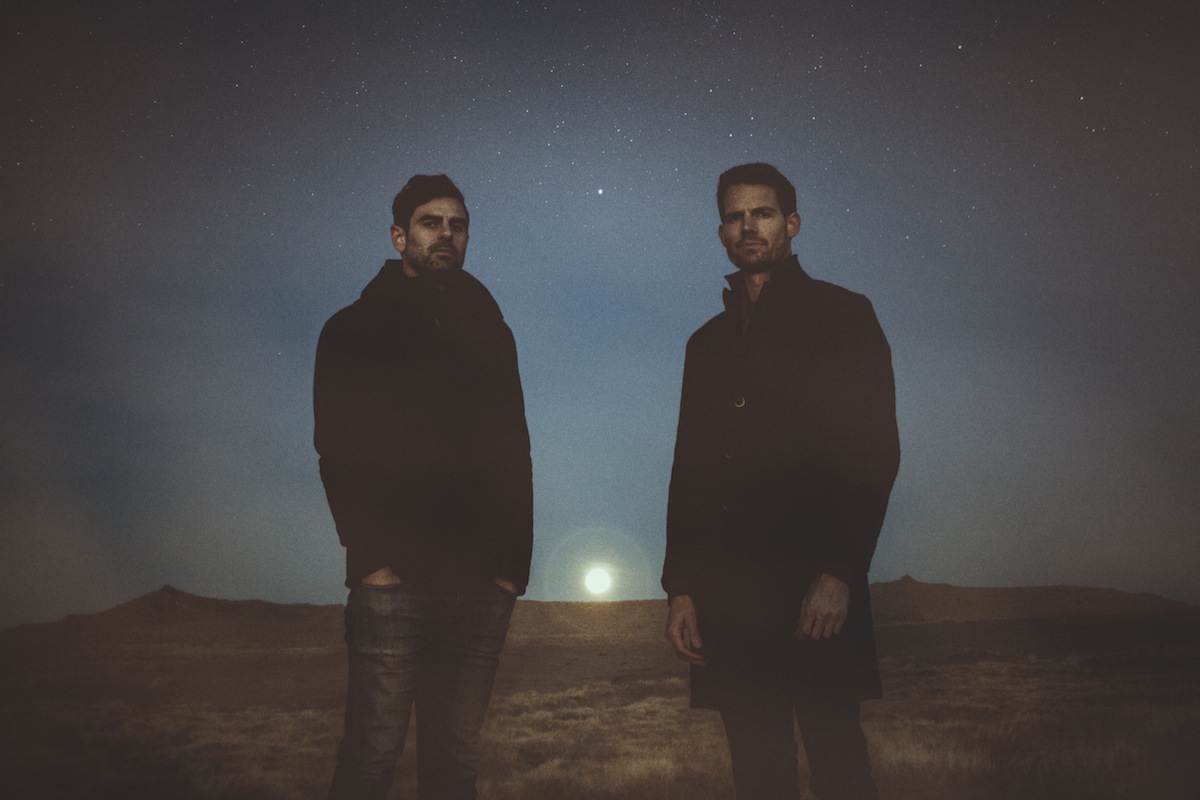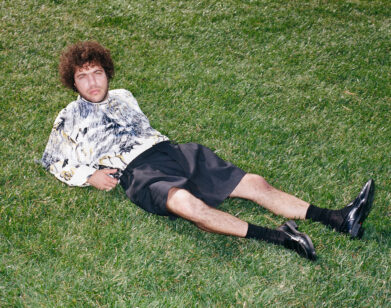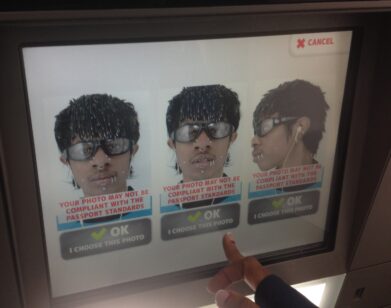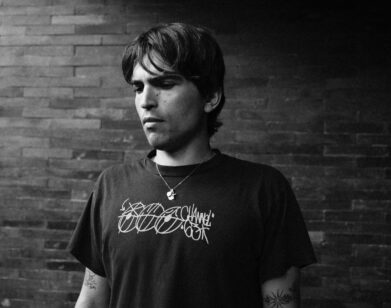Tycho, Eyes Wide Open

ABOVE: TYCHO. PHOTO COURTESY OF REUBEN WU
Tycho has grown. With the release of Scott Hansen’s fourth album, Awake, we see the audiovisual project of the San Francisco-based musician and graphic designer develop into something more than ambient synth pop: it’s the realization of Hansen’s dream to form a full band at the cusp of rock and electronic music.
It’s been a long journey. Hansen released his first album back in 2004, and it was a sturdy jump from what we hear today. Where listening to Dive was like entering another, slightly out-of-focus world, Awake is exactly what the title suggests: sharp, crisp, and grounded. As Hansen explains, that’s the mental state he was in upon approaching the record, and the change speaks for itself.
TEMPE NAKISKA: What’s your earliest memory of understanding the way music is made?
SCOTT HANSEN: That’s something I’ve always tried to nail down. A couple of my friends had guitars, and I remember messing with them, but I was often intimidated by it. I think I sat down at a piano once when I was really young, but that was it. It wasn’t until I was 20 or so I started thinking about it, I started getting into drum and bass and all that. I think that was the first time I wanted to know where crazy sounds would come from. I started to research it and then eventually started creating music. I got my first drum machine when I was 20.
NAKISKA: Did you put the pieces together yourself?
HANSEN: I studied computer science and graphic design yeah, so music was self-taught and a backburner thing, an obsessive hobby. But lately I’ve started learning a lot more about it.
NAKISKA: What’s that process been like?
HANSEN: I’ve been working with an engineer over the past two records, Michael Eldridge, AKA Count. He’s taught me a lot; it rubs off seeing how he accomplishes things. He allows me to just describe a vision and create a framework and he dials it in and gets it perfect.
NAKISKA: Was it quite a change starting to work with somebody with such a clear understanding of what you were trying to do?
HANSEN: It has been an interesting evolution in process and workflow. The first record was literally where I had all these songs I had created and I felt like I had enough to put together an album. I had it mastered, but it wasn’t a concerted effort. It was cobbling together disparate pieces. Dive came about partially in that way, at least the beginning; I had “Daydream” and “Coastal Break” and then I said, “Okay, let’s turn this into an album.” I went on my own for a while, then I met Count, and he came in and mixed it. I came to him with all these terrible recordings and he was saying next time I needed to do it this way. So this time I went into it knowing how to do it, and I had access to him the whole time. It was a more holistic approach.
NAKISKA: You’ve said previously it’s the first real Tycho album. Why?
HANSEN: I think when I say that, it’s more of me realizing this fulfills the vision more fully than any of the other records. They were more me doing what I could with the resources and skills I had. It wasn’t what I had envisioned. I’ve always wanted to do more of a hybrid band record. I also knew being the producer and engineer and writer had its place for a while, but this time I felt like I could broaden things finding the people to work with, trusting one another.
NAKISKA: How’s the transition to bigger audiences been, working with a band?
HANSEN: It’s always a double-edged sword. I appreciate the intimacy of a 300 to 500 person venue; it’s the sweet spot for me. But it depends on the venue, The Fillmore in San Francisco, the way it sounds is like a beautiful big living room. At the end of the day, I’m not a solo acoustic vocalist. My vision for this thing is the huge 30-foot screen and the big sound and lights, an overwhelming sensory experience. It doesn’t come up so well in a 5000-person venue. The biggest we’ve ever played our own shows was Webster Hall, and that was 1200; that still felt right for me.
NAKISKA: So what do you visualize the Tycho experience as being?
HANSEN: When I go to shows and I’m conscious of every nuance that it’s impacting on me, it can ruin it or make it the best ever, and it can re-contextualize the album, where I go home and listen with new ears. My goal is the cohesion and feeling like a singular vision expressed through different mediums. Video is the next thing I want to do because I’m a graphic designer on one hand and a musician on the other. Graphic design is extremely limited in a sense, where you can’t have this storytelling or arches of energy like you can with music. But with video, you have all these different elements that you can’t have built singly into design. It’s this perfect middle ground.
NAKISKA: So it’s like a translation?
HANSEN: Yeah. Music is so heavily processed it’s hard for people to realize how it works, like when I started listening to electronic I was like, “What the hell?” whereas with something like the Beatles, you get all the components. When people come to the show they’re like, “OK, you’re playing real instruments.” It is about grounding the music in reality.
NAKISKA: Do you think that weight is on electronic musicians’ shoulders today, to ensure their audiences understanding they’re not just twiddling a whole lot of knobs?
HANSEN: I don’t think there’s an imperative on musicians to do that. But there’s a whole type of performance space emerging that fans appreciate and understand; they’re starting to become more educated about how that music is made. But you know, if you’re going to see a minimal house producer, you don’t want to see him with a bass guitar; you want to see how it was actually made.
NAKISKA: What do you feel your generation of musicians has that previous ones didn’t?
HANSEN: Perspective and a reference point. We aren’t inventing anything, we grew up with electronic music presented to us as a fully formed reality. People were experimenting with it in the 1980s; logical progression was out in 1994, and that’s an extremely advanced idea. So it’s inspiring to already have seen those extremes being reached. For example, DJ Shadow was always so sample-heavy so I didn’t think of it as electronic music, but then when Boards of Canada came along, it bridged the gap for me, because it had the sample vibe but with synths. I was like, “Okay, it doesn’t have to be dance music, it doesn’t have to be experimental, it can be ambient.” As artists, it makes it easier —standing on the shoulders of the people that came before us.
NAKISKA: How to you still move forward and keep refreshing?
HANSEN: I’ve always had an overwhelming desire to express a particular set of ideas. As a musician, I’m always working with different people who can teach me new things and through that reach closer to an idea of this perfect expression. I’m never setting out to change the face of electronic music, I’m just trying to define this vision.
NAKISKA: You have a blog, ISO50, and really you’ve been around from the very beginning of the social media progression. How has that felt, to experience that as a musician?
HANSEN: It’s been at the core of my promotion and distribution model since I began. I started with MP3.com way back when. It’s all I’ve known. I’m extremely thankful that this structure exists for us because I don’t believe I would be a professional musician and have an audience if it wasn’t for the Internet. Just over the last few years, seeing the power of Facebook in particular, it’s amazing to see people’s engagement with these platforms. It’s really empowering.
AWAKE BY TYCHO IS OUT TODAY, MARCH 18. TYCHO PLAYS WEBSTER HALL ON APRIL 18. FOR MORE ON THE ARTIST, PLEASE VISIT HIS WEBSITE.






